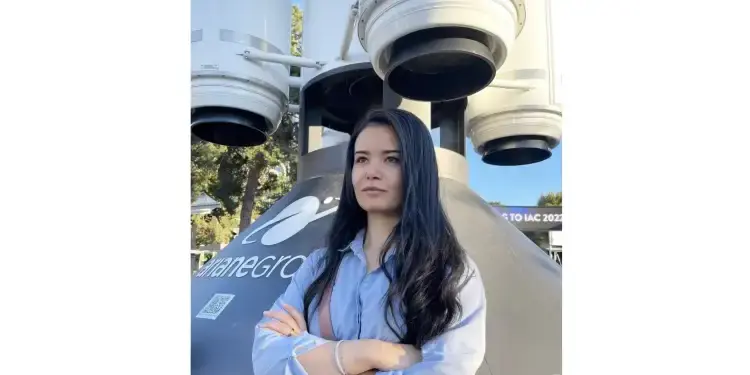Rania Toukebri, aerospace engineer residing in Germany, is one of the pioneers who actively contribute to the mission “Artemis 2”, the first inhabited mission of the American space program NASA – Artemis.
The aim of this program is to bring man back to the moon and to establish a lasting presence to conduct scientific research and explore new possibilities.
In an interview with Mosaique FM this Monday, April 14, 2025, Rania shared her crucial role in this spatial adventure, stressing the complexity and importance of her contribution.
As manager of the design of the “Orion” spaceship service module, Rania Toukebri plays a central role in the mission. The Orion vessel, planned to transport astronauts around the moon in April 2026, is a fundamental element of the mission.
The service module that it has helped to design is crucial for the management of the resources necessary for the mission, in particular in terms of energy food, thermal management and supply of propellants. Rania evokes this mission as one of the most complex of her career, requiring great technical precision and years of intense work, from design to the test phase.
Currently, astronauts train intensively aboard the Orion module to adapt to living conditions in space, in particular the specific aspects of the vessel and the safety systems it houses. This preparation stage is crucial to ensure that astronauts can live and work in optimal conditions during the mission.
For Rania, this project represents much more than a simple scientific mission; It also embodies a unique opportunity to mark the history of spatial exploration, while highlighting the expertise and know-how of Tunisian engineers worldwide.
Rania Toukebri’s involvement in this emblematic mission illustrates the growing role of Tunisian scientists and engineers in large -scale international projects. It also embodies the determination and aspiration of young Tunisian talents to repel the boundaries of innovation and spatial exploration.
Artemis II is the second mission of the NASA Artemis program, aimed at bringing humans back to the moon by 2027. This mission will send a crew of three American astronauts and a Canadian around the moon to test the Orion spacecraft, launched by the Space Launch System. This inhabited flight will mark the first mission with crew beyond the terrestrial orbit since Apollo 17 in 1972, before Artemis III, which will deposit astronauts on the moon in 2027.
Artemis II is the first to take away a crew on board the Orion spacecraft. Succeeding Artemis I, who tested the SLS launcher with an uncommon Orion in November 2022, this mission aims to validate the capacities of the vessel in a lunar context. It allows in particular to test the life support system for a 20 -day mission and to repeat the operations provided for Artemis III. The ship will follow a trajectory behind the moon before returning to earth.








